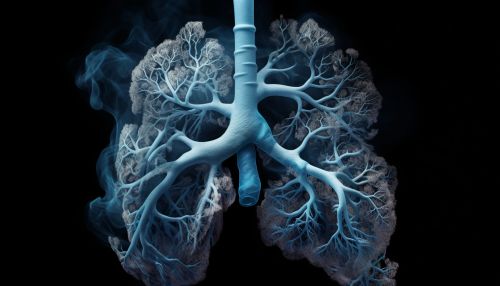Human lung
Anatomy and Structure
The human lung is a complex organ that is essential for respiration. It is part of the respiratory system and is responsible for the exchange of gases between the body and the environment. The lungs are paired organs located in the thoracic cavity, on either side of the heart.


The lungs are divided into sections called lobes. The right lung has three lobes: the superior, middle, and inferior lobes, while the left lung has two: the superior and inferior lobes. These lobes are separated by fissures, which allow for independent movement and expansion during breathing.
Each lung is covered by a thin, protective layer known as the pleura. The pleura is a double-layered membrane, with the outer layer (parietal pleura) attached to the chest wall and the inner layer (visceral pleura) covering the lungs themselves. Between these two layers is the pleural cavity, which contains a small amount of fluid that lubricates the surfaces and allows for smooth movement during respiration.
Inside the lungs, the main bronchus divides into smaller bronchi, which further divide into bronchioles. These bronchioles lead to tiny air sacs called alveoli, where the exchange of gases takes place. The alveoli are surrounded by a network of tiny blood vessels called capillaries, which carry oxygen-rich blood from the lungs to the rest of the body and return with carbon dioxide to be exhaled.
Function
The primary function of the lungs is to facilitate gas exchange, a process known as respiration. During inhalation, air enters the lungs through the trachea and bronchi, reaching the alveoli. Oxygen in the inhaled air diffuses across the alveolar-capillary membrane into the blood, while carbon dioxide, a waste product of cellular metabolism, diffuses from the blood into the alveoli to be exhaled.
In addition to gas exchange, the lungs also play a role in maintaining the body's pH balance. By regulating the concentration of carbon dioxide in the blood, the lungs contribute to the body's acid-base homeostasis.
Diseases and Disorders
There are numerous diseases and disorders that can affect the lungs, including chronic obstructive pulmonary disease (COPD), asthma, lung cancer, pneumonia, and tuberculosis. These conditions can lead to a range of symptoms, such as shortness of breath, coughing, wheezing, and chest pain.
COPD is a progressive disease that makes it hard to breathe. It is characterized by the obstruction of airflow from the lungs, often due to damage to the alveoli and bronchial tubes. COPD is primarily caused by long-term exposure to lung irritants, such as tobacco smoke.
Asthma is a chronic condition characterized by inflammation and narrowing of the bronchial tubes, leading to periods of wheezing, chest tightness, shortness of breath, and coughing. Asthma can be triggered by a variety of factors, including allergens, respiratory infections, physical activity, and stress.
Lung cancer is a type of cancer that begins in the lungs. It is one of the most common and deadly types of cancer, often due to late-stage diagnosis. The primary cause of lung cancer is smoking, though it can also occur in non-smokers due to factors such as exposure to radon gas, secondhand smoke, and certain types of chemicals and minerals.
Pneumonia is an infection that inflames the air sacs in one or both lungs. It can be caused by a variety of organisms, including bacteria, viruses, and fungi. Symptoms can range from mild to severe and may include cough with phlegm or pus, fever, chills, and difficulty breathing.
Tuberculosis is a potentially serious infectious disease that primarily affects the lungs. It is caused by the bacterium Mycobacterium tuberculosis and is spread from person to person through tiny droplets released into the air via coughs and sneezes.
